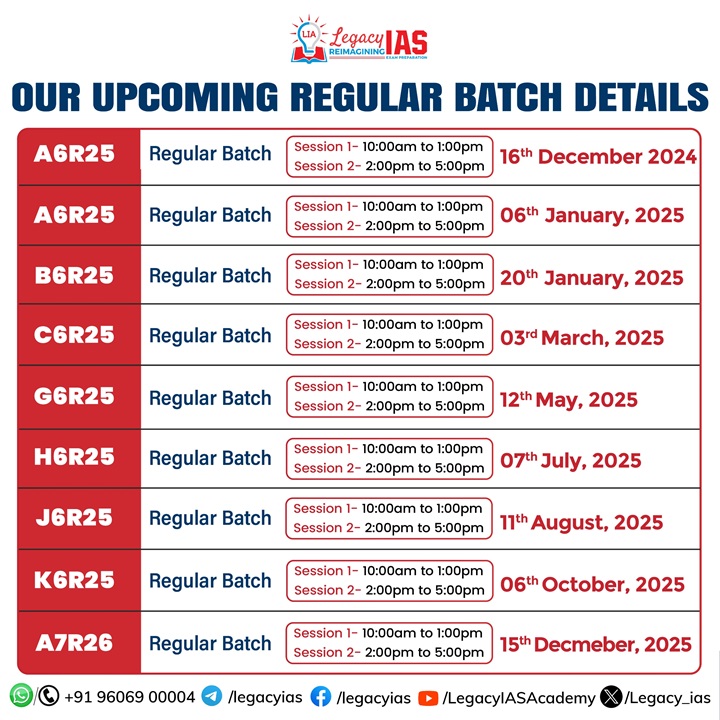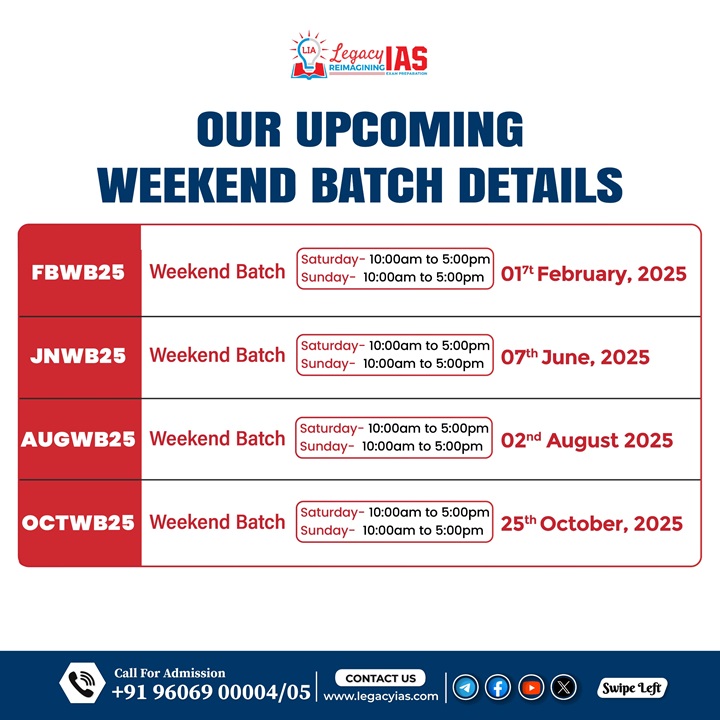CONTENTS
- Gramodyog Vikas Yojana (GVY) program
- Performance Grading Index (PGI)
Gramodyog Vikas Yojana (GVY) Program
Focus: GS II: Government Policies and Interventions
Why in News?
Recently, the Lieutenant Governor of Delhi distributed Honeybee-Boxes and Toolkits to 130 recipients as part of the Gramodyog Vikas Yojana (GVY) program. The initiative was organised by the Khadi and Village Industries Commission (KVIC).
Gramodyog Vikas Yojana (GVY):
- Launched in March 2020 as part of the Khadi Gramodyog Vikas Yojana (CSS).
- Comprises two components: GVY and Khadi Vikas Yojana (KVY).
- GVY aims to develop village industries through common facilities, modernization, and training.
Included Activities:
- Agro-Based & Food Processing Industry (ABFPI)
- Mineral-Based Industry (MBI)
- Wellness & Cosmetics Industry (WCI)
- Handmade Paper, Leather & Plastic Industry (HPLPI)
- Rural Engineering & New Technology Industry (RENTI)
- Service Industry
Components:
- Research and Development (R&D) support for product development, innovation, and design.
- Capacity building through Master Development Training Centers (MDTCs) and institutions of excellence.
- Market support through product catalogs, industry directories, market research, and marketing techniques.
- Buyer-seller meetings and exhibitions for promoting village industries.
About Khadi Village Industries Commission:
- Khadi and Village Industries Commission (KVIC) is a statutory body of the Indian Constitution.
- It comes under the Ministry of Micro, Small and Medium Enterprises.
- It was established by Khadi and Village Industries Act, 1956. It has been amended twice, in 1965 and 2006.
Objectives of KVIC
The broad objectives of the Khadi Village and Industries Commission encompassing self-reliance and sustainability are:
- To boost employment in the country.
- To promote the promotion and sale of Khadi articles
- To cater to the self-reliance doctrine of the country by empowering underprivileged and rural sections of the society.
Functions of KVIC
The following are the functions of Khadi Village and Industries Commission:
- It plans, promotes, organizes, and implements programmes for the development of Khadi and Village Industries (KVI).
- It coordinates with multiple agencies that are engaged in rural development for several initiatives w.r.t khadi and village industries in rural areas.
- It maintains a reserve of raw materials that can be further promoted in the supply-chain.
- It aids in creating common service facilities that help in processing of raw materials.
- It aids the marketing of KVI products through artisans and other avenues.
- It creates linkages with multiple marketing agencies for the promotion and sale of KVI products.
- It encourages and promotes research and development in the KVI sector.
- It brings solutions to the problems associated with the KVI products by promoting research study and enhancing competitive capacity.
- It also helps in providing financial assistance to the individuals and institutions related to the khadi and village industries.
- It enforces guidelines to comply with the product standards to eliminate the production of ingenuine products.
- It is empowered to bring projects, programmes, schemes in relation to khadi and village industries’ development.
Performance Grading Index (PGI)
Focus: GS II: Education
Why in News?
Recently, the Union Ministry of Education released report on Performance Grading Index 2.0 for States/UTs for the year 2021-22.
About Performance Grading Index (PGI):
- Released annually, starting from 2017-18 up to 2020-21.
- Assesses the performance of the school education system at the State/UT level through a comprehensive index.
PGI 2.0:
- Drive multi-pronged interventions to improve education outcomes across all dimensions.
- PGI 2.0 consists of 1000 points and 73 indicators grouped into two categories: Outcomes and Governance Management (GM).
- The categories are further divided into six domains: Learning Outcomes, Access, Infrastructure & Facilities, Equity, Governance Process, and Teachers Education and Training.
- States/UTs are classified into ten grades based on the PGI 2.0 for 2021-22, ranging from the highest achievable grade, Daksh, to the lowest grade, Akanshi-3.
- PGI 2.0 indicators are aligned with policy initiatives and interventions introduced after the implementation of the National Education Policy (NEP) 2020.
- Helps States and UTs identify gaps and prioritize areas for intervention to strengthen the school education system at every level.



